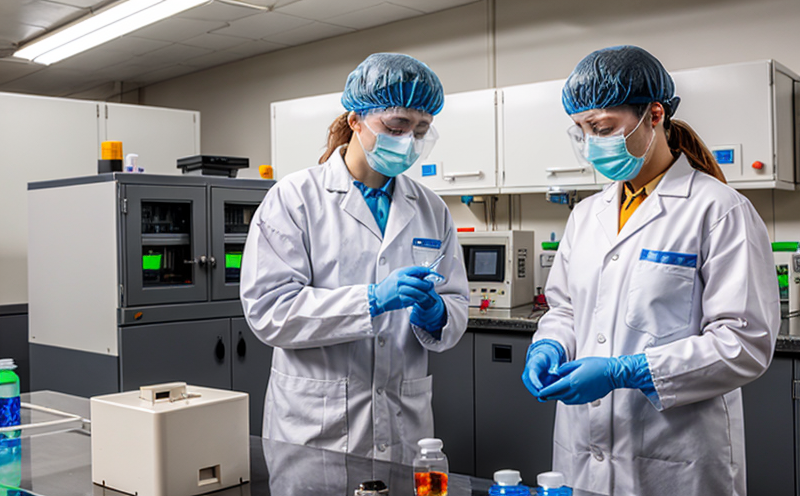ISO 39527 Acrylamide Detection in Potato Crisps
The detection of acrylamide in potato crisps is critical for food safety and regulatory compliance. This test, governed by ISO 39527, ensures that the levels of acrylamide—formed during high-temperature cooking processes—are within acceptable limits to protect public health.
Acrylamide forms when certain carbohydrates react with asparagine under conditions typically found in food processing. This reaction is known as the Maillard reaction and can occur at temperatures above 120°C (248°F). Potato crisps, among other processed foods, are particularly susceptible to acrylamide formation due to their high carbohydrate content.
The test outlined by ISO 39527 is designed to measure acrylamide levels in potato crisp samples. This involves a series of steps including sample preparation, extraction, and quantification using advanced analytical techniques such as liquid chromatography-tandem mass spectrometry (LC-MS/MS).
Quality managers and compliance officers must ensure their processes comply with international standards to avoid legal issues and maintain consumer trust. Acrylamide testing is a key component of this strategy, providing data that can inform process adjustments and ingredient sourcing decisions.
The test procedure typically begins with the collection of potato crisp samples, which are then ground into fine powder for consistent extraction. Extraction solutions are used to dissolve acrylamide from the sample matrix. After extraction, the solution is analyzed using LC-MS/MS to quantify acrylamide levels accurately.
International standards such as ISO 39527 provide benchmarks and methodologies that ensure consistency across laboratories worldwide. Compliance with these standards ensures reliable results that can be trusted by regulatory bodies, buyers, and consumers alike.
The testing process is not only about compliance but also about safeguarding public health. High levels of acrylamide are associated with potential carcinogenic effects, making the detection and control of this compound in food a priority for many countries. By adhering to ISO 39527, laboratories can play a crucial role in maintaining food safety standards.
| Step | Description |
|---|---|
| Sample Preparation | Collection of potato crisp samples, followed by grinding into fine powder. |
| Extraction | Use of extraction solutions to dissolve acrylamide from the sample matrix. |
| Analytical Method | Quantification using LC-MS/MS for accurate measurement. |
Why Choose This Test
- Ensure compliance with international standards like ISO 39527.
- Guarantee food safety and protect public health from acrylamide exposure.
- Achieve accurate quantification of acrylamide levels for process optimization.
- The test provides reliable data that can be trusted by regulatory bodies, buyers, and consumers.
- It helps in making informed decisions about ingredient sourcing and processing methods.
International Acceptance and Recognition
- The test is recognized by numerous countries for ensuring food safety standards.
- ISO 39527 is widely accepted in the global market, enhancing product credibility.
- It aligns with international regulations and guidelines to ensure consistency across borders.
- The test results can be easily shared and understood by regulatory bodies worldwide.





